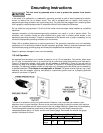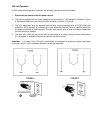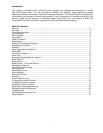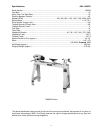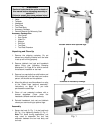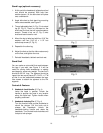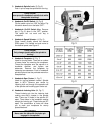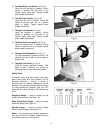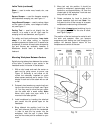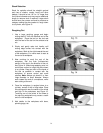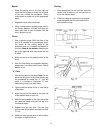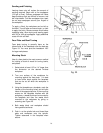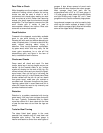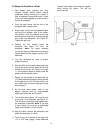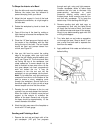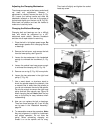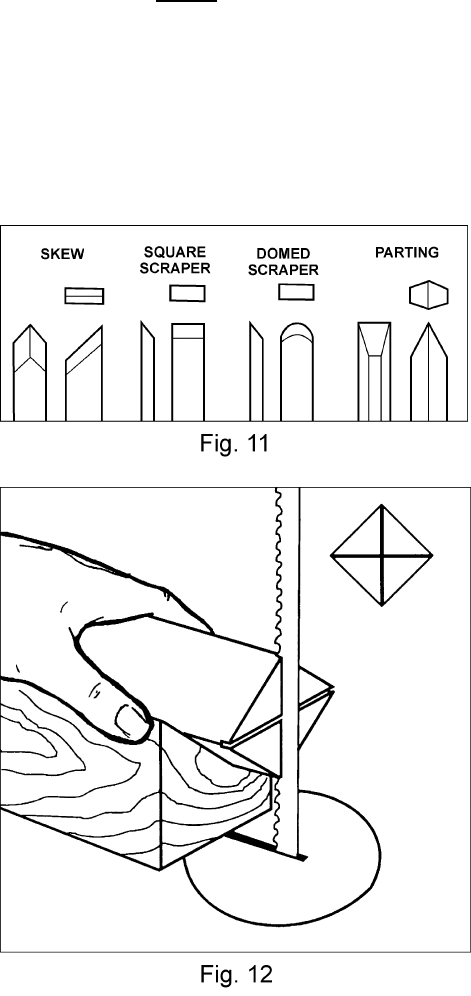
1
3
Lathe Tools (continued)
Skew — used to make vees, beads, etc., see
Figure 11.
Square Scraper — used for diameter scraping
and featureless scraping, etc, see Figure 11.
Large Domed Scraper — used to reduce ridges
on the interior of bowls, round edges of bowls,
etc, see Figure 11.
Parting Tool — used to cut directly into the
material, or to make a cut off. Also used for
scraping and to set diameters, see Figure 11.
For safety and best performance, keep tools
sharp. If a tool stops cutting, or requires
excessive pressure to make a cut, it needs to be
sharpened. A number of brand name sharpening
jigs and fixtures are available, however, a
woodturner should learn to sharpen tools
freehand.
Mounting Workpiece Between Centers
Spindle turning takes place between the centers
of the lathe. It requires a spur center in the
headstock and a live center in the tailstock.
1. With a ruler locate and mark the center on
each end by going corner to corner, see
Figure 12. Accuracy is not critical on full
rounds but extremely important on stock
where square sections are to remain. Put a
dimple in each end of the stock with an awl
or nail.
2. Extremely hard woods may require kerfs cut
into the spur drive end of stock, see Figure
12. You may need to drive the spur center
into the stock with a wood mallet. Note:
Never drive stock onto spur while it is
mounted in the lathe spindle.
3. Install workpiece by inserting the attached
spur center into the spindle taper on the
headstock.
4. Bring tailstock into position, lock it to the
bed, and advance quill with the handwheel
in order to seat the live center into the
workpiece. Lock the quill in place. Make
sure the live center point is centered on your
mark.
5. Move tool rest into position. It should be
parallel to workpiece, approximately at the
centerline, and approximately 1/8" from the
closest part of the workpiece. Lock tool rest
body and tool rest in place.
6. Rotate workpiece by hand to check for
proper clearance from tool rest. Note: You
may want to trim off the corners of a square
workpiece to make turning a little easier.
7. Start lathe at lowest
speed and bring it up to
the appropriate RPM for the size of stock,
see Figure 6 page 11.
The position of the tool rest can be varied to suit
the work and operator. After you become
experienced with setting tool rest changing the
position will become second nature for the
workpiece and comfort of the user.



